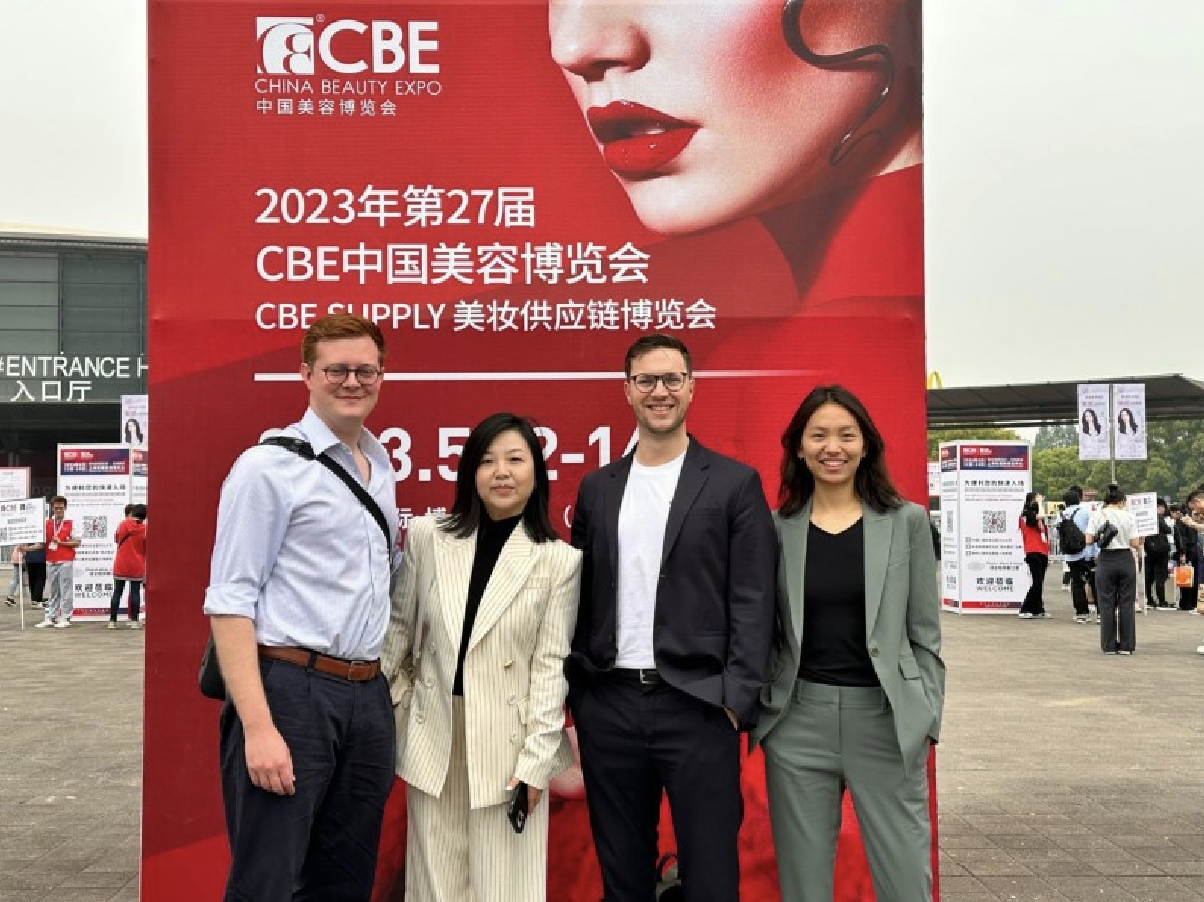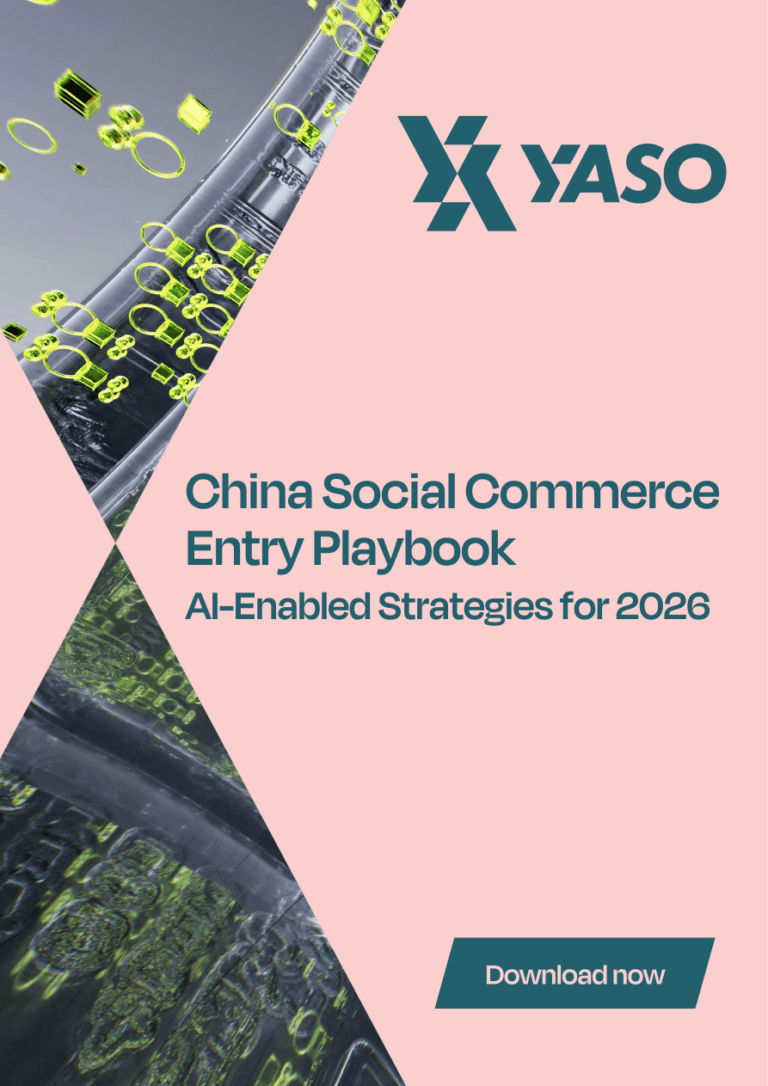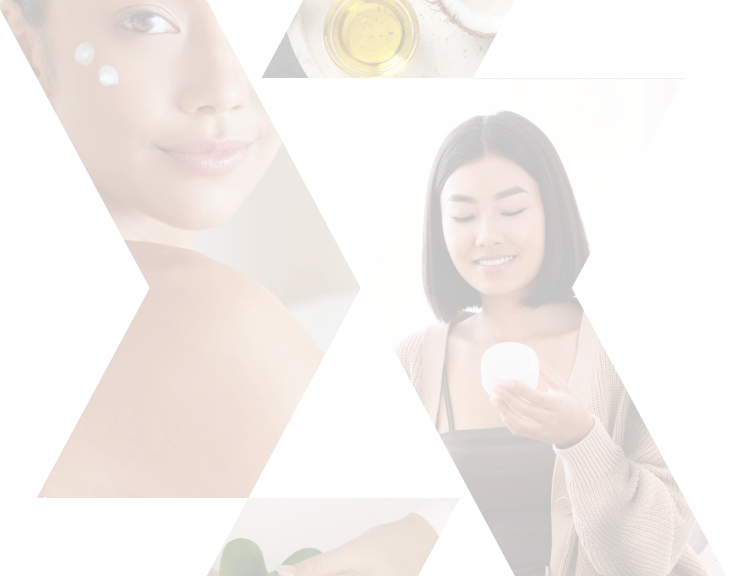
Driven by a significant increase in the health and wellness consciousness among Chinese consumers, both domestic and international brands are rapidly expanding their presence into the Chinese beauty space, leading the way in industry development and innovation.
The YASO team recently visited the 2023 China Beauty Expo (CBE) in Shanghai.
Here are 10 emerging trends in the Chinese beauty industry that were present during the visit:
1. Skincare Efficacy
The Expo housed over 10,000 brand new skin care products from over 600 different companies. The advancement of technology has led to growing consumer demand for skincare products that target specific skin concerns and provide advanced and effective skin repair. These technologies include LED light therapy, derma rollers and microcurrents.
Rooted in science-led formulas and innovation, doctor-developed skincare products and dermatologist owned skincare brands are increasingly supplying products that focus on anti-aging, whitening, and sensitive skin.

2. Morning and Evening Skincare Routines
Morning and evening skincare routines have become a mainstay in China. The phrase “Zao C, Wan A” is a hot topic among young Chinese consumers in the workplace (Zao (早) and Wan (晚) mean “morning” and “evening” respectively).
The original routine was as follows: “Zao C” referred to drinking coffee in the morning, while “Wan A” referred to drinking alcohol in the evening. The routine was designed to help young Chinese professionals get through their hardworking lifestyle.
The phrase has taken on a new meaning in the beauty space. It now also refers to a skincare routine consisting of different products and steps that are to be followed in the morning and evening. The letter “C” represents Vitamin C, which is often used in morning skincare routines, while the letter “A” represents Retinol, also known as Vitamin A, which is commonly used during evening skincare routines.
The market for segmented skincare in China has matured, and consumers and brands are increasingly subdividing products into other categories, such as serums.
3. Personal Care Products
Consumers of personal care products in China are increasingly interested in the composition of the products they use, placing greater emphasis on ingredients, efficacy, and skincare benefits. Awareness of potential allergens, irritants, and harmful chemicals is also growing, with consumers preferring products containing cleaner and safer ingredients, not only for their face and neck, but for their entire body.
Natural, organic, and sustainable ingredients have become crucial components of personal care products in China. The Beauty Expo in Shanghai brought together more than 400 domestic and foreign personal care companies.

4. Beauty Supplements
The market for beauty supplements in China remains relatively niche, yet it holds tremendous growth potential. Chinese consumers are becoming more acutely aware of the connection between their inner health and outer beauty, leading to heightened interest in beauty supplements that can enhance skin health, hair growth, and overall appearance.
Social media and celebrity endorsements also play a significant role in driving the demand for beauty supplement products in China. Influencers and celebrities often promote these supplements as part of their skincare routines, prompting consumers to try them out for themselves.
5. Beauty Devices
Beauty devices are more popular than ever, largely due to consumers being unable to access overseas medical beauty treatments during the pandemic. As a result, home beauty devices have gained popularity in the Chinese domestic market, leading to a more diverse range of products and garnering significant attention from Chinese consumers.
The most popular trend in the Chinese beauty device market is the combination of products with beauty devices as a complete set, allowing brands to personalise their offerings and provide consumers with more effective home skincare solutions. Nearly 200 brands offering a type of beauty device were present during the CBE.
6. Men’s Beauty and Skincare
Gender-neutral skincare products and skincare products tailored for men in China have gained attention and offer significant room for development. The male beauty market in China reached 17.8 billion RMB in 2021. The growth is in line with similar global trends in the industry. Yet, the number of domestic brands catering to men’s beauty and skincare needs is still relatively limited in China. International men’s beauty brands have invested more deeply in research and development in this area, leaving big potential for future growth.

7. Mass Fragrance
Fragrances have become an essential companion in the beauty and cosmetics industry. Chinese Gen-Z consumers now use perfume in their daily lives, with their preference being for more personalised and peculiar scents. The post-Covid stay-home economy will likely continue to fuel mass fragrance product sales, especially for home fragrance products among China’s lifestyle-savvy youth. According to data from Euromonitor International, China’s fragrance market has a 16% compound annual growth rate, on track to hit $3.1 billion by 2025.
Fragrance products are also gradually being utilised by skincare brands to offer consumers new and interesting choices. Ingredients are one of the top 3 deciding factors when it comes to perfume purchases in China, with green and natural ingredients key among these.

8. Mother and Baby Care
The market for mother and baby skincare products, catering to new mothers and their children has been steadily growing in recent years. Younger Chinese parents, particularly those born after 1990, are becoming increasingly conscious of the benefits of organic children’s products and are placing greater emphasis on the quality and ingredients of products consumed by their children. The Expo housed over 1000 maternity-baby products from around 100 domestic and international companies.
9. Anti-Hair Loss Care
Hair loss is becoming an increasingly common problem among Chinese individuals born after 1990. The average age of people suffering from hair loss in China is 30.1 years old, significantly earlier than previous generations. According to DataTouch, hair and scalp care was the hottest personal category on most social media and e-commerce platforms in 2020. Furthermore, during the 618 shopping festival in 2022, demand for hair care products increased by 33.1%.
Anti-hair loss shampoos are the most popular treatment in hair care among Chinese consumers. The relatively affordable price range of anti-hair loss shampoos compared to other hair loss treatments, such as hair transplants or laser therapy, makes them a more accessible option for consumers seeking to address their hair loss concerns.
10. Cosmetic Plastic Surgery and Beauty Products
Cosmetic plastic surgery brands and professional clinics have retained a high degree of popularity in China. Many users of Chinese beauty brands have incorporated principles and concepts from light-based aesthetic plastic surgery into their skincare products, combining advanced beauty technology with daily skincare routines.



